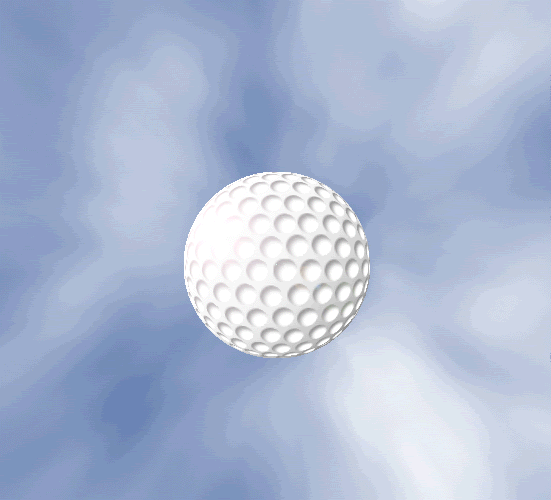
A dimpled balls travel up to four times farther than smooth-surfaced golf ball.
The early golf ball, known as a featherie, was simply a leather pouch filled with goose feathers. In order to obtain a hard ball, the pouch was filled wet with wet goose feathers. The typical drive with this type of ball was about 150 to 175 yards. In 1845 a new ball was used made of gum. The gum was heated and molded into a perfect sphere. This was a failure and did not work as well as the featherie, until someone noticed that the old gum balls flew farther. The balls had become scored and marked, by trial and error they ended up with the dimple golf ball. The science of aerodynamics helps explain the dimpled phenomenon. When a ball travels rapidly through air, the air is pushed apart by the ball. The air joins back together behind the ball, but the joining is full of eddies and turbulence. The turbulent wake reduces the pressure behind the ball, pulling it back and slowing it down. The dimples on a golf ball trap a thin layer of turbulent air all around the ball, even wrapping it around the trailing half. Because the turbulent layer is very thin, the air joins together more smoothly behind the ball, creating a smaller wake. The ball feels less backward drag, and it flies farther.






0 comments:
Post a Comment